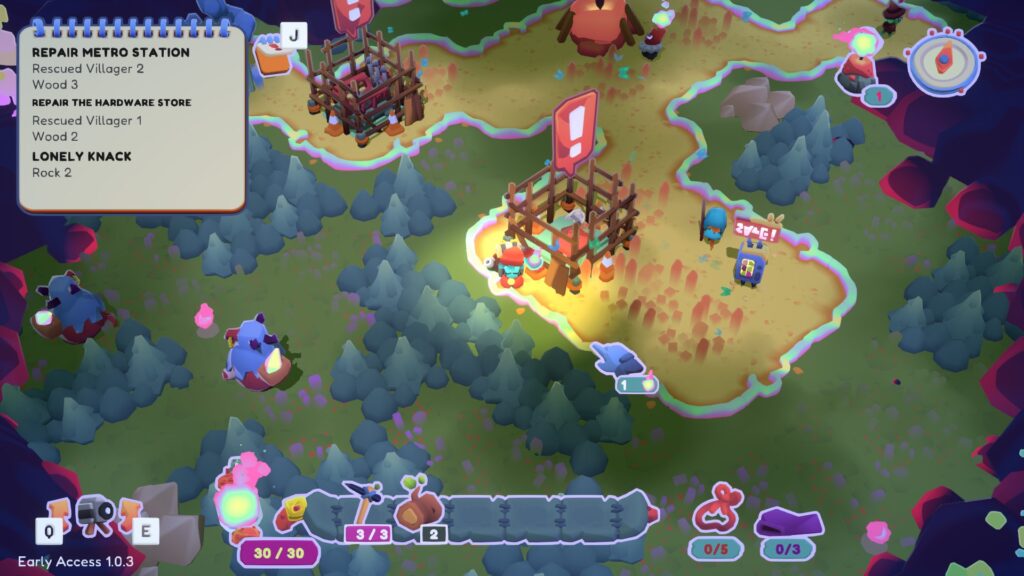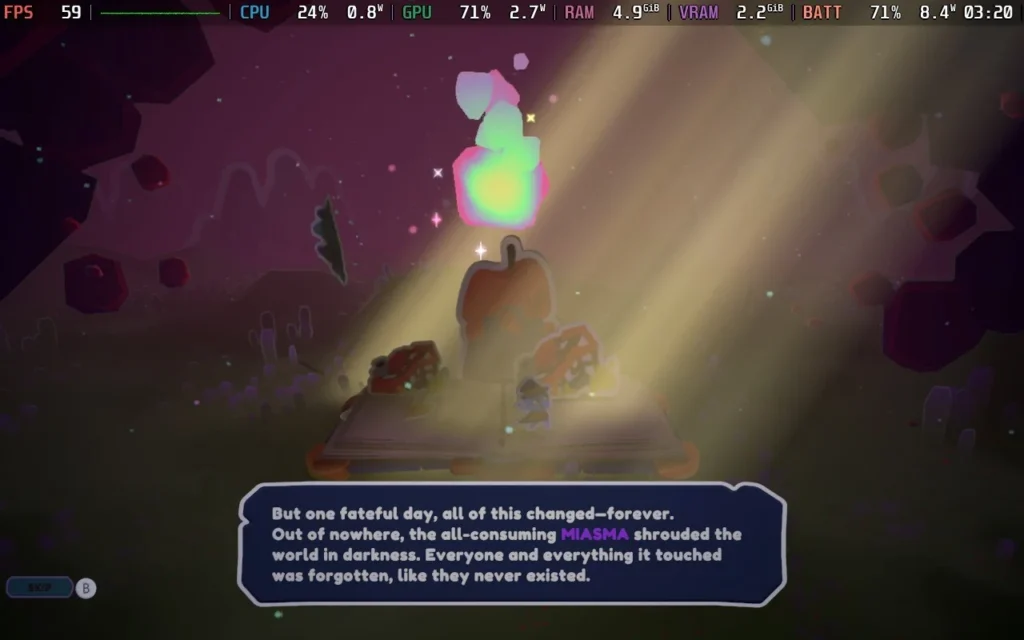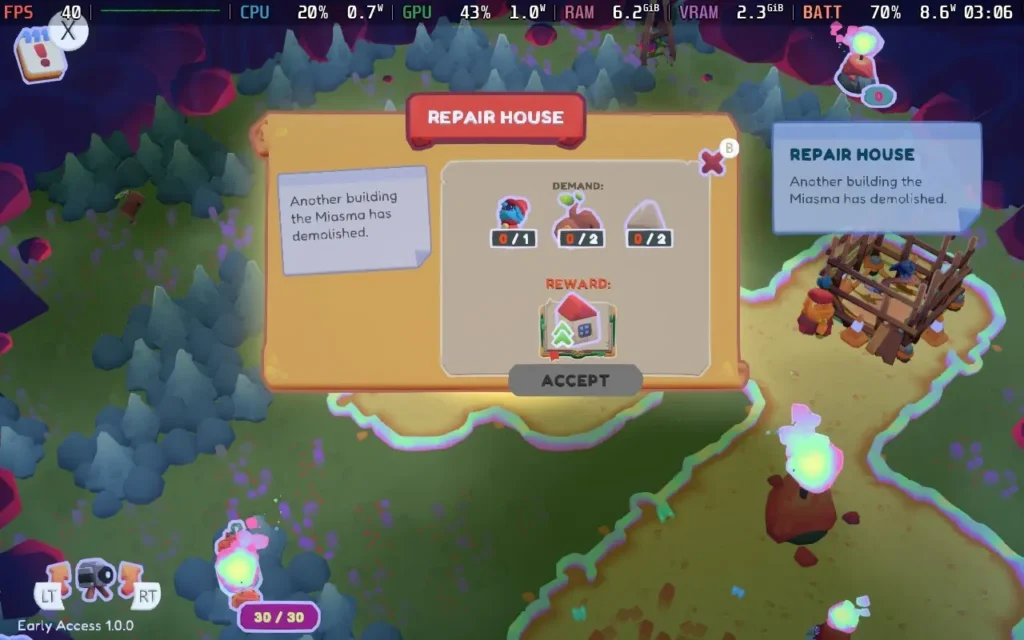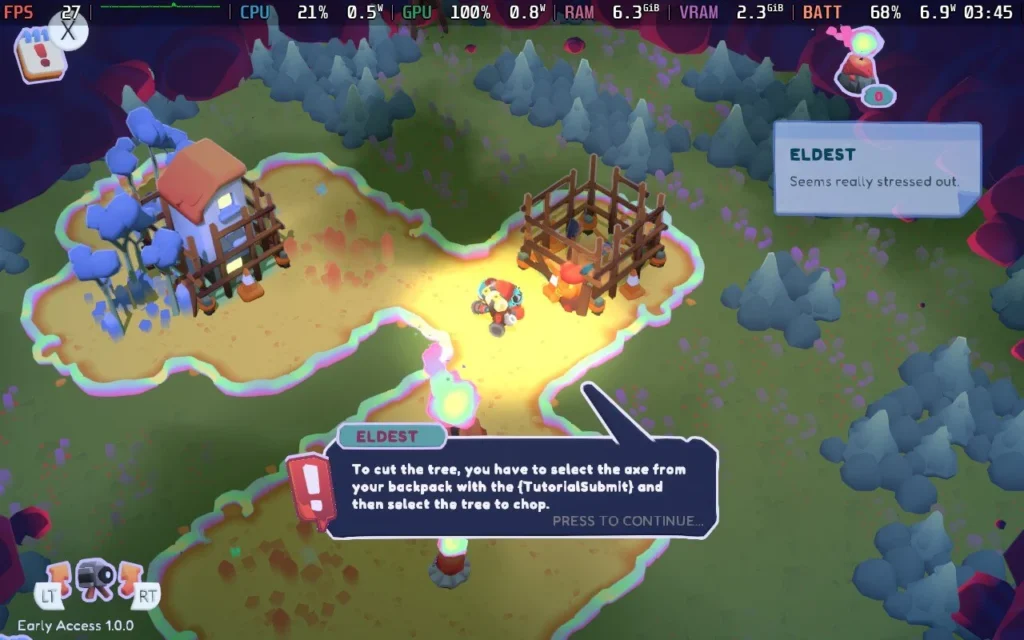
The game was provided by Daedalic Entertainment for review. Thank you!
This review was created using an LCD Steam Deck, OLED testing is coming soon.
It is also in Early Access, so all performance and features are subject to change.
It's fascinating when our gaming tastes change. As much as I love games that allow me to wage unrestricted total war worldwide, I've grown increasingly fond of wholesome video games. Games like Stardew Valley, A Short Hike, Spiritfarer, and Disney Dreamlight Valley are some of my favorites. It's like the embodiment of drinking a hot chocolate after sitting in your softest chair at home after a long day at the office. These experiences are perfect for enjoying the Steam Deck, and while some may make you cry as Spiritfarer did, it's still a worthwhile time.

Into the Emberlands, developed by Tiny Roar and published by Daedalic Entertainment, launched last week on Steam, and it took me by surprise. It is available in Early Access for $6.59, although a 10% discount until July 3rd brings it to just $5.93, which is very affordable. Even though the game does lack some polish, it is still very enjoyable and relaxing, given what it offers, and I would consider it worthwhile to dive into.
With its colorful visuals and comfortable gameplay, Into the Emberlands eases players into its world. The Emberlands are lost in a dark shroud called the Miasma, and it is your task to revive the village into something that can be home again. This is done by leveling up the Ember Shrine through population objectives. How do you get new villagers? You pick them up and escort them home. While the story isn't expanded to any meaningful degree, you don't need it for this game.
The tutorials are easy to follow, and the characters in the village make me laugh with their humorous dialogue. It’s wonderful when you do all the dirty work while the Elder and Guard stay safe, twiddling their thumbs.

The gameplay loop is pretty straightforward. Traveling through the darkness damages you if you don’t have an Ember Light with enough charge. It refills when you enter the safe boundaries of your village, while every step outside depletes it. It forms a solid foundation of challenge and discovery: Can I save that lost villager over there? Can I succeed in bringing them home without dying? These are questions you will have to ask constantly.
In addition to rescuing people and expanding the village, Emberlands offers incentives in the form of little quests. Most of these involve repairing damaged buildings, fetching items for villagers (called Knacks for some reason...which sounds like something edible), and carrying out missions on the map. They are all simple tasks with little variation, but it’s part of the charm. Expanding the village advances time, and the cycle begins again with additional tasks to complete.
You can also explore the world, which offers little events and things to accomplish. You can use items like the pickaxe and axe to gather stone and wood, which opens up new paths while filling your inventory, but you will also encounter Giant Trolls that you need to bribe to open up more of the map. You can also find Big Birds that can increase your Ember storage so you can stay on the map longer.
It’s more engrossing than it sounds, and I wanted to play more despite knowing exactly what would come next. You can unlock some extra things, such as a free axe or extra starting resources, should you lose a run, but I wouldn't call Into the Emberlands a roguelike.

As I was playing, I encountered a few technical problems. The most irritating bug I encountered was my saved files being ‘forgotten.’ When I tried to boot up a save, it often appeared as requiring a new save, forcing me to start the tutorial sequence again. While the tutorial doesn’t take long to complete, it’s still frustrating. A recent patch seemed to have fixed this issue, though. Occasionally, I could not access my cloud saves on my laptop or Steam Deck.
Taking all this into account, Into the Emberlands is a simple yet charming exploration game. Despite my odd frustrations, it’s a great pick if you need to relax for a few hours. It is easy to play, the quirky dialogue is entertaining, and it’s just enough to keep you invested.
That brings us to how it performs on the Steam Deck. While it lacks any graphical settings apart from screen resolution, I found it very playable. Right out of the box, Into the Emberlands works great with standard settings: 60hz refresh rate, unlocked TDP, 1280x800 resolution without any slowdown (Although you will still see a little stutter when loading into a building menu). The controls are also functional without tweaking, although it sometimes shows keyboard prompts when using the gamepad profile.
Despite running at an unlocked TDP, Into the Emberlands is gentle on the battery, consuming an average of 10W maximum. This translates to around 4 hours of battery life on my LCD Steam Deck model. This is a lightweight game suitable for the Steam Deck.
While the performance was fairly stable, there was a noticeable input lag between clicking on an event and the menu screen popping up. This isn’t as bad on the Steam Deck as elsewhere, but it’s something to remember. There are no graphical settings to tweak except screen resolution.

Setting the frame limit to 40FPS, the refresh rate at 40hz, and limiting the TDP does not impact performance much, and I found a TDP limit of 5 to be the sweet spot of smooth performance and battery life. Oddly, reducing the TDP limit did not reduce the power draw as much as I expected. At a 5W TDP with the frame limit locked to 40FPS, it had an average power draw of 9 watts. You can lower it to 4 and even 3W TDP if you want to maximize battery life, although I found a 3W TDP lowers the average framerate to 25FPS. Into the Emberlands is a point-and-click game, so a lower framerate is not as detrimental as you think, but a 40hz/40FPS/5W TDP is my recommendation.

Some text is tricky to read due to the small font size, and there is no way to adjust the interface size. While this is a problem, I did not find the small text size as problematic as in other games.
Into the Emberlands is playable in English, French, German, Spanish, Polish, Korean, Russian, and Simplified Chinese. Otherwise, important settings are somewhat lacking. You can adjust the screen resolution, change the screen (borderless window, exclusive fullscreen, or windowed), and adjust the volume, but that’s all you can do in the settings.
There are no colorblind options, font size options, graphical settings, or X and Y axis inverting. This does not prevent it from being good on the Steam Deck, but the lack of options is disappointing.
Despite some rough edges and the lack of quality-of-life settings, Into the Emberlands is worth more than the sum of its parts. This is an easy recommendation if you want a comfortable game that does not break the bank. It has a bit of jank but is well worth the asking price. And it is fantastic on the Steam Deck with minimal changes, making it worthwhile to play!
Our review is based on the PC version of this game.
If you enjoyed this review, be sure to check out the rest of the content on SteamDeckHQ! We have a wide variety of game reviews and news that are sure to help your gaming experience. Whether you're looking for news, tips and tutorials, game settings and reviews, or just want to stay up-to-date on the latest trends, we've got your back.
Into The Emberlands packs a lot into its small price tag. This is a great cosy game for bite sized gameplay, and it runs well on the Steam Deck as well!